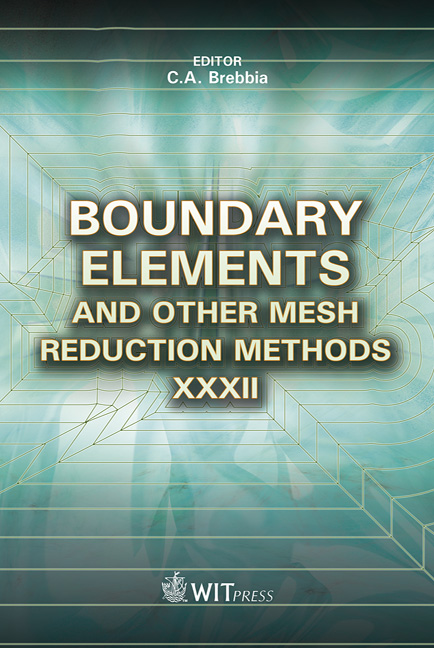Rotational Symmetry Applied To Boundary Element Computation For Nuclear Fusion Plasma
Price
Free (open access)
Transaction
Volume
50
Pages
10
Page Range
133 - 142
Published
2010
Size
367 kb
Paper DOI
10.2495/BE100121
Copyright
WIT Press
Author(s)
M. Itagaki, T. Ishimaru & K. Watanabe
Abstract
An efficient boundary element technique has been proposed to deal with a problem when geometry and boundary conditions have a rotational symmetry. In this technique, no boundary elements need to be defined on the symmetry surface. This idea has been applied to a problem of magnetic field in nuclear fusion plasma. A useful \“linear transformation” for the rotational symmetry in the toroidal direction has been derived in terms of the x-, y- and z-components of vector potential in a 3-D Cartesian coordinate system. Applying this linear transformation to the discretized set of boundary integral equations, one can drastically reduce the size of matrix, the number of unknowns and then computing cost. Also, accurate solutions can be expected. Results of test calculations demonstrate the validity of the present formulation. Keywords: boundary element method, rotational symmetry, vector potential, linear transformation, nuclear fusion plasma, Cauchy condition surface method, magnetic sensor. 1 Introduction The present work is a part of the authors’ research plan to develop an inverse analytic technique to identify the boundary shape of nuclear fusion plasma from signals of magnetic sensors located outside the plasma. For this purpose, the Cauchy condition surface (CCS) method [1] has already been established for a tokamak-type fusion device. The geometry of tokamak plasma is axisymmetric so that the analysis can be made in a 2-dimensional (2-D), r-z system. On the other hand, 3-D analyses are required for non-axisymmetric plasma, e.g., in a helical type device such as the Large Helical Device (LHD). The application of
Keywords
boundary element method, rotational symmetry, vector potential, linear transformation, nuclear fusion plasma, Cauchy condition surface method, magnetic sensor





